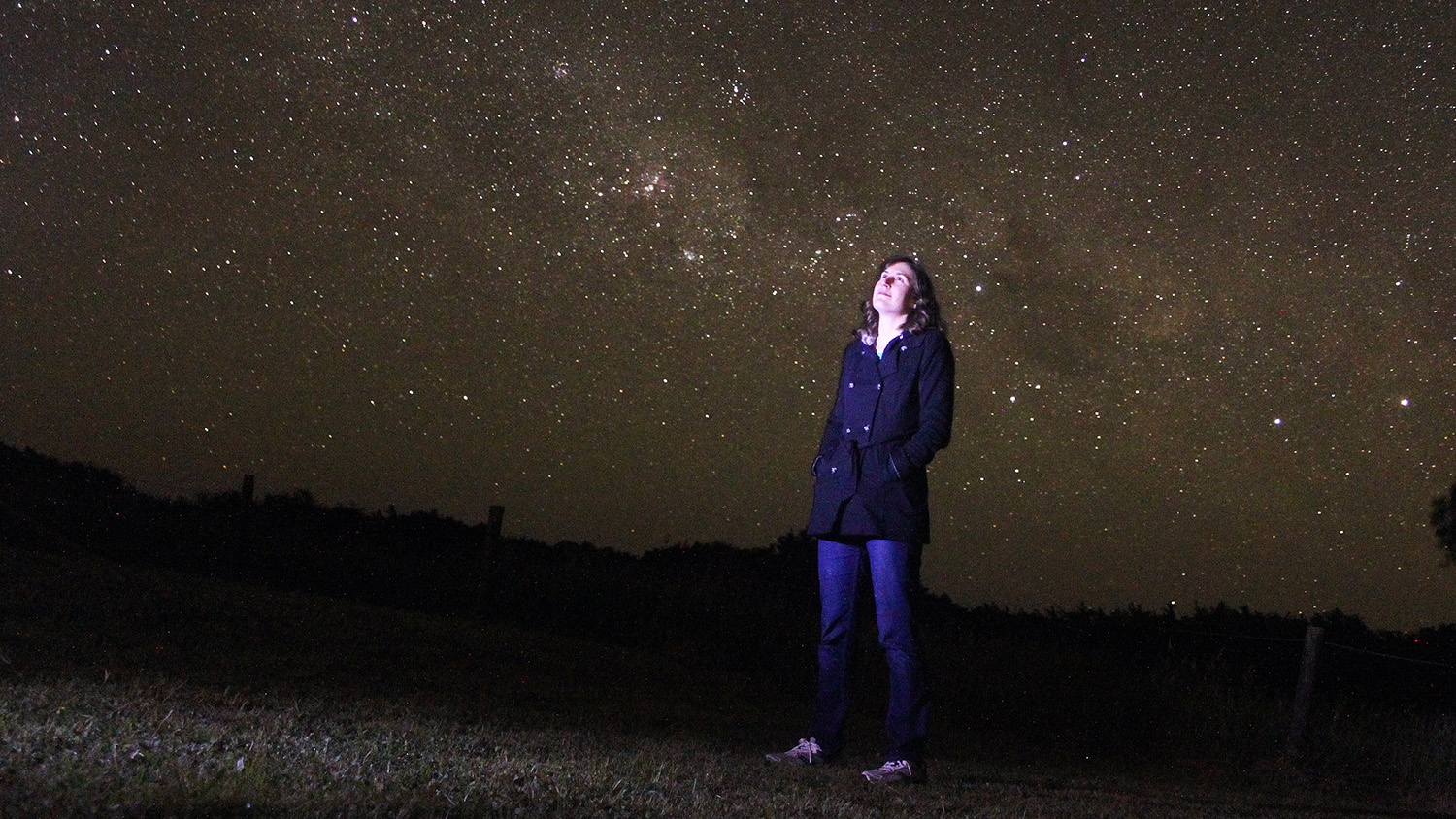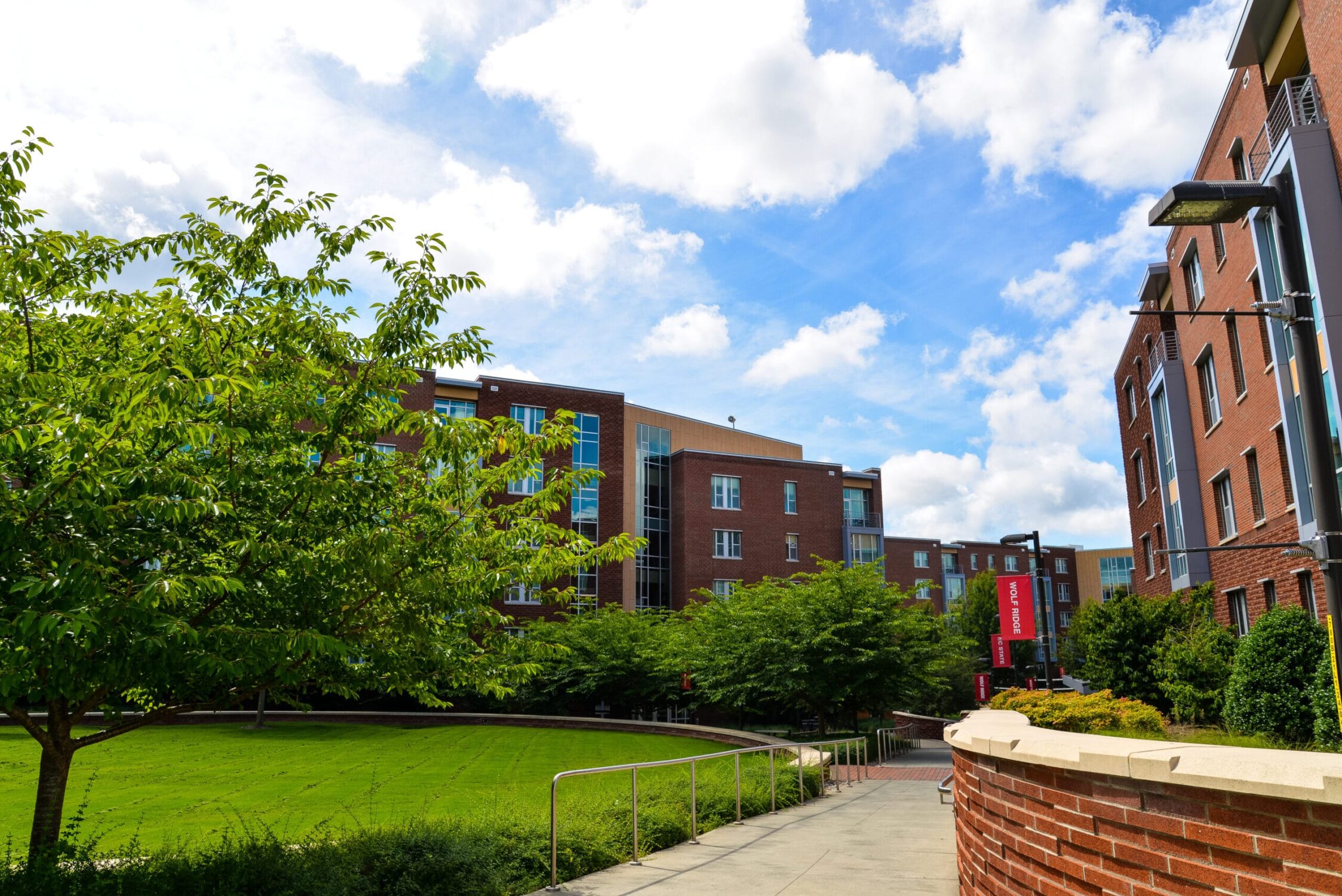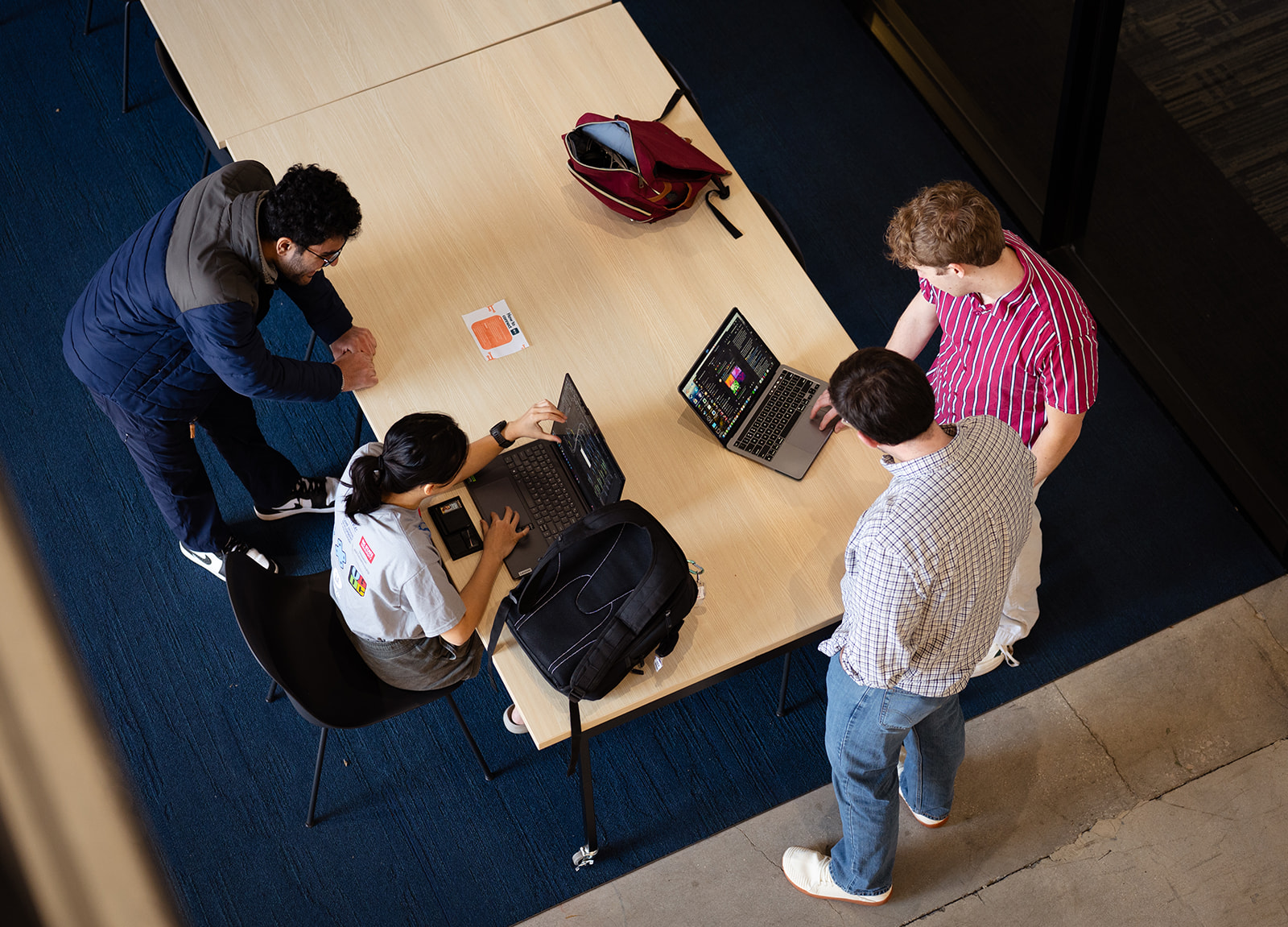Leadership in Public Science: Meet Katie Mack

This is one in a series of five Q&As with the members of NC State’s Leadership in Public Science faculty cluster. Read more about the cluster.
As you can imagine, the sort of folks who are hired to be part of a group focused on leadership in public science tend to have a strong interest in sharing science with large audiences. And that’s certainly true of Katie Mack, an astrophysicist who will arrive at NC State in January 2018 as an assistant professor of physics.
Mack is an astrophysicist who studies how dark matter may have affected the first stars and galaxies in the universe. She also has, as of this writing, more than 145,000 Twitter followers. Her enthusiasm for talking with the public about astronomy and her skill at discussing complex subjects in accessible language have made her a go-to source for reporters seeking insight or commentary on research regarding how the universe works.
Learn more about Mack’s research and how the public figures in to the study of outer space.
What does your research focus on?
My main interest at the moment is in dark matter, the mysterious stuff that makes up about 85 percent of the matter in the universe. We have good evidence that it’s there, holding together our galaxy and others, but we still haven’t been able to identify what it’s made of.
I study a particular kind of dark matter that, if it exists, could have interesting effects on the first stars and galaxies. As a theorist, this means mostly doing calculations (either on paper or with a computer) and working out what the consequences for those stars and galaxies would be, and how we might see evidence using future telescopes.
What does “public science” mean to you, and how does it factor into your work?
To me, public science is anything that brings science out into the open and allows the public to be more connected to it. Sometimes this might mean citizen science (where people can get involved in actual research), or open science (which allows the public to watch research being carried out as it happens), or science communication. In my own work, I’ve done a lot of work to communicate science to the public and to let people see how my work is done; I’m excited to find new ways to incorporate more public involvement into my research.
What drew you to public science in the first place?
I find the exploration of the universe incredibly exciting and profound. I think, to me, it feels unnatural to keep that excitement and those discoveries to myself. So talking about science and bringing more people into the work I’m doing is the most obvious thing. I also think it’s incredibly important. So much of the modern world is built on complex scientific principles, and as we move forward, some of our biggest challenges can only be solved through an understanding and a deep respect for the methods of science. In order for us all to find the right strategies to meet these challenges, science needs to be visible and accessible and foster a sense of personal connection. Investing in and encouraging public science is how we can meet that need.
What sort of public science projects do you have in mind once you get settled in at NC State?
Some of the things I’ve been wanting to do for a while include some new science communication projects designed to engage new audiences, an open science project with my own research, and a project that would create citizen science opportunities in theoretical physics. I’m also just excited to work with the rest of the Leadership in Public Science group on new initiatives.
This post was originally published in NC State News.


